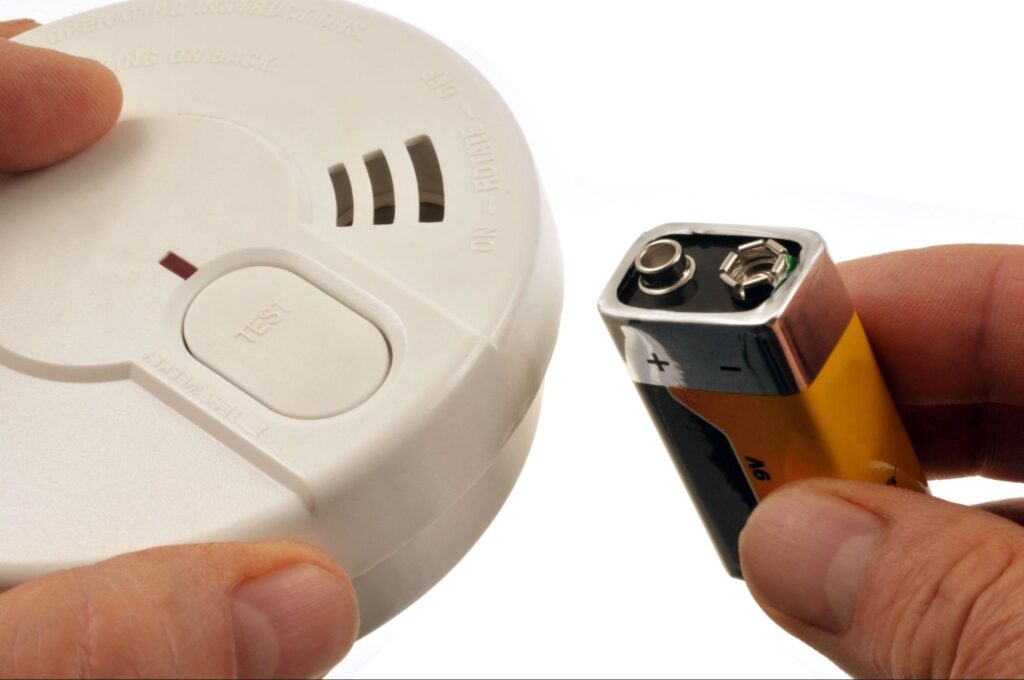
Ensuring the functionality of your smoke alarm is a critical, albeit occasionally overlooked, component of home security. Maintaining a smoke alarm, specifically replacing its battery, sometimes seems small but carries an undeniable weight. A malfunctioning or non-operational smoke alarm could be the difference between safety and disaster. Failure to upkeep this vital unit can yield catastrophic consequences, endangering both the lives of your loved ones and the integrity of your property. This guide aims to educate homeowners, renters, and caretakers on the intricate process of accurately replacing their smoke alarm batteries – an essential home maintenance task that everyone must familiarize themselves with.
The Importance of Regularly Checking Your Smoke Alarm
Smoke alarms are undemanding; they sit on your ceiling, quietly keeping an ever-vigilant watch over your home. However, regular checks on these devices are instrumental in preserving their functionality. Understanding the status of your smoke alarm guarantees it’s primed to alert you promptly in the event of a fire. Common advice from safety experts insists on a once-a-month check for smoke alarms, complemented by annual battery replacements. Adhering to this regimen contributes to safety and is a statutory requirement in several home insurance policies, which often mandate evidence of maintained and operational smoke alarms.
Identifying the Right Time to Replace a Smoke Alarm Battery
Determining when to replace your smoke alarm battery isn’t necessarily intuitive. Several signs, however, indicate an exhausted battery or a faltering device. Among these are frequent, inexplicable alarms or continuous beeping that persists despite reset attempts – typical behaviors of a unit running low on power. Ignoring these warnings and delaying replacement could lead to sudden and total battery failure, leaving you unprotected during a fire. To forestall such scenarios, it’s advisable to establish a battery replacement schedule. Coordinating replacements with significant annual events, such as daylight savings time changes or birthdays, ensures you don’t forget this essential task.
Choosing the Ideal Smoke Alarm Battery
The market offers a variety of smoke alarm batteries, with common types being the traditional 9-volt and long-life lithium batteries. Picking the best battery for your smoke alarm goes beyond initial cost considerations. Compatibility with your specific alarm model is paramount, along with the average life span under typical conditions and a proven track record of reliability.
Renowned brands like Duracell and Energizer often receive high praise for their longevity and efficient power output. That said, one should exercise caution to avoid purchasing incompatible or counterfeit batteries, which can inhibit your alarm’s functionality, compromising your safety.
Step-by-step Guide to Replace a Smoke Alarm Battery
Successful replacement of a smoke alarm battery requires some preparatory steps. Having a new, right-sized battery at hand is the first step. A secure stepladder or stool is also needed to reach the alarm safely. Once set, follow this procedure for an effective battery replacement:
1. Switch off the main power source to avoid accidental electrical shocks.
2. Gently detach the smoke alarm from its wall or ceiling bracket.
3. Find and unhinge the battery compartment and cautiously remove the depleted battery, avoiding damage to the interior circuits.
4. Before inserting the new battery, ascertain its correct orientation, usually guided by + and—signs within the compartment.
5. After fitting the new battery, reseal the compartment and secure the alarm in its designed place.
6. To ensure all is in order, test your smoke alarm by pressing the inbuilt test button.
Maintenance Tips to Enhance Smoke Alarm Performance
Aside from replacing the battery, smoke alarms also require regular upkeep to improve their effectiveness and prolong their lifespan. Discovering comprehensive smoke alarm maintenance practices includes yearly cleaning of your smoke alarm, which can be achieved by light dusting around the device with a small brush or gently vacuuming the vents to remove dust or cobweb particles.
Pay close attention to any anomalies like an unresponsive test button or spontaneous triggering of the alarm, which could serve as early indicators of a failing unit and necessitate a complete replacement of the smoke alarm.
Conclusion
In conclusion, maintaining an operational smoke alarm goes beyond just securing your home; it’s also a matter of life preservation. Effectuating this maintenance, mainly through timely battery replacements, significantly bolsters your household safety. Don’t confine this indispensable information to yourself. Share it with your family, friends, and neighbors, empowering them with the know-how to keep their homes safe. Keep the upcoming dates for your scheduled smoke alarm checks marked, and remember that your vigilance could make an incalculable difference.














